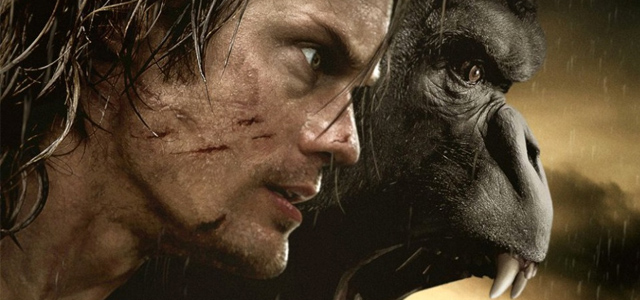(M) Alexander Skarsgård, Samuel L. Jackson, Margot Robbie
As the creator of Tarzan and the author of 24 books containing the adventures of the man from the jungle, author Edgar Rice Burroughs had a love/hate relationship with Hollywood. The many movie and TV interpretations of his Tarzan tales have not matched Burroughs’ own vision for the champion of the wilds. But will today’s audiences be interested in this incarnation of the king of the jungle?
The jury of popular opinion will make itself known, but if Burroughs were still alive, this would potentially satisfy his vision of the ape man.
Deep in the heart of Africa in 1890, King Leopold of Belgium has sent his representative, Leon Rom (Christoph Waltz), to the Congo Free State to pillage the riches of this uncharted land. Meanwhile, the monarch has amassed huge debts to many countries of the world, particularly England and the United States of America. The English government approaches Lord John Clayton/Tarzan (Alexander Skarsgård) to go as its representative to the Congo, to survey the work of the Belgians. After some deliberation, Clayton decides to go back to his former homeland accompanied by his wife, Jane (Margot Robbie), and an American government representative, George Washington Williams (Samuel L. Jackson). Eventually, this trio unearths crimes which Rom and King Leopold’s troops are committing against humanity — and nature — in this reclusive African nation. Tarzan goes to battle against Rom with the aid of the his human and animal families. At the same time as he tries to assist the people of the Congo to save their future, Tarzan is trying to come to terms with his own past.
First questions first: Why bring back to the big screen this heroic but wild figure? Interestingly, it makes sense on many levels to have Tarzan swing back into contemporary cinemas. As audiences begin to suffer from superhero fatigue, there is still a need to cheer on strong moral heroes. The Legend of Tarzan‘s script provides a fresh spin on this flawed, but strong protector of the jungle. Also, with the use of computer-generated imagery, there is a whole new level of adventures to take this character to. While this movie is set in the 19th Century, director David Yates (the last four Harry Potter films) brings Tarzan roaring into this century. Yates successfully overlays Tarzan’s bush exploits upon an anti-slavery message without labouring the atrocities of the past.
Waltz (Django Unchained) continues to prove he is the quintessential villain and Jackson (The Hateful Eight) provides the right amount of humour to balance Skarsgård’s intense portrayal of Tarzan. These men are perfectly placed in their roles, but it is the relationship between Skarsgård and Robbie that make this whole thing a worthwhile excursion. In staying true to the original love story of John and Jane Clayton, what is revealed is a beautiful marriage. These robust characters and the solid special effects lift this new incarnation of the jungle man into the upper foliage and it becomes a great option during the holidays.
But what keeps The Legend of Tarzan from soaring above the cinematic tree tops is how the primary premise remains unbelievable. For more than a century, Tarzan’s story has been a part of folklore and impacted multiple generations since Burroughs created him in the early 1900s. To roll Tarzan’s biographical sketch around in your mind brings forth more questions than plausible answers: How did he learn all of the languages of the animals and the humans? Did he never break a bone? How did the shipwrecked parents get to the interior of Africa? How is he always clean shaven?
This locks The Legend of Tarzan into the realm of the inconceivable, so the best remedy to this issue only can be to not think too hard about it all (otherwise, the enjoyment of the journey is swiftly taken away). If you do that, you’ll be able to get into a breathtaking adventure that’s good (not great) and might re-introduce the “Lord of the Apes” to a new generation.
What are some of the bigger questions to consider from this film?
Slavery, murder, theft, lying… all of these acts against humanity are addressed in The Legend of Tarzan, amid a whole lot of jungle action. Yet, the question that came to my mind was, ‘How can any of these evil things happen in our world?’ That’s a question that has been around since the beginning of time. Fortunately, the Bible gives an answer to the question and a solution, too. The problem can be found in Genesis 3 and the answer comes in the middle of the Bible — throughout the four biographies of Jesus.
If this is a question that you have, today might be a good day to grab a Bible and find the answers.
Where do you go in the Bible?
Genesis (First book of the Bible) and Luke (About mid-way through the Bible)
Russell Matthews works for City Bible Forum Sydney and is a film blogger













